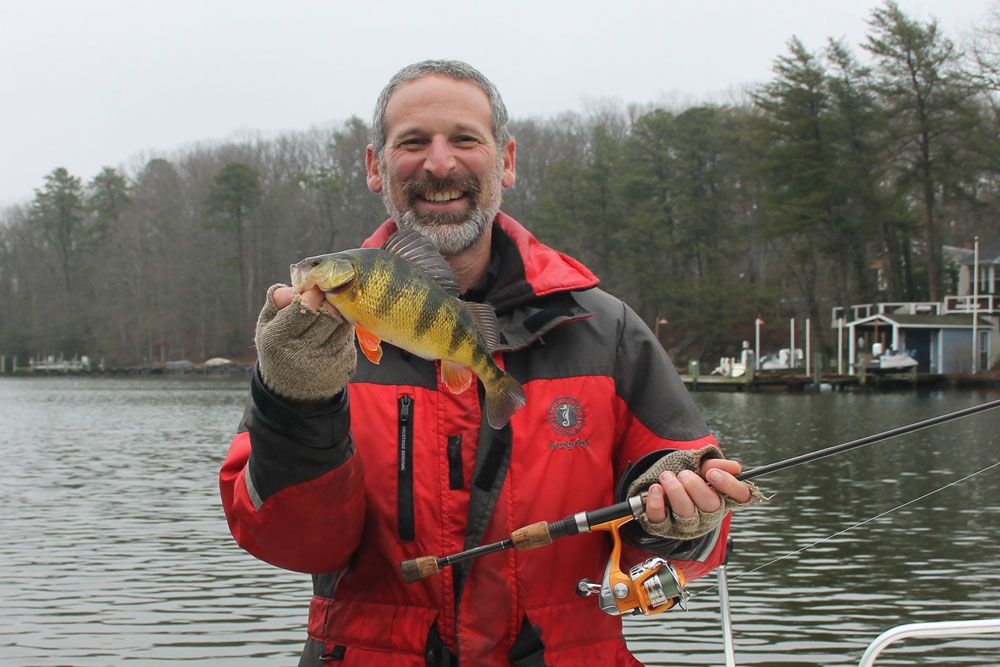Whether you’re ice fishing for bluegills at Deep Creek Lake or trying to get some mid-winter yellow perch on the line at Port Deposit, “pounding” is a winter-time technique that often works wonders with jigs.

To pound your line first deploy your jig to the best-guess depth. Then simply drop your rod tip an inch or two, and instantly bring it right back up to its original position. The trick is to move your tip so quickly that the line goes completely slack for a fraction of a second and the lure hardly even has a chance to sink before you bring the rod tip back up. The net result? Viewed underwater, the jig will appear to quiver with occasional tiny hops.
To get the best results, try pounding the line for three to five seconds at a time, then let the jig hang static for a few seconds. You’ll occasionally feel a hit while pounding but more commonly, the hit comes right after you stop moving. If the hits don’t come, try changing depth by a foot or two, and then repeat the pounding process.
You can try pounding with either monofilament or braid line, though with the zero-stretch braid, you'll want to keep the motion as minimal as possible or the lure will jump around too much. Just as importantly, a slow-action rod will help with this technique. A little extra give in the tip will make it easier to get the lure quivering, without making it jump too much. Lure weight will also have an effect on whether you get a quivering motion or abrupt jumps (remember - making that quiver is the key to success). A good way to gauge the tackle you're using and figure out if it's working effectively is to keep the lure just a foot or two below the surface, and watch it as you pound. When you get it quivering instead of jumping and darting, you've got the motion that matches the gear down pat.
TIP: Pounding is incredibly effective through the ice when you tie on a tiny 1/64th ounce shad dart, and tip it with a minnow eyeball. Yes, a minnow eyeball. That’s every bit as strange as it sounds and getting the eyeball out of the minnow (without popping it and making a gooey mess) can be challenging, but this method works!